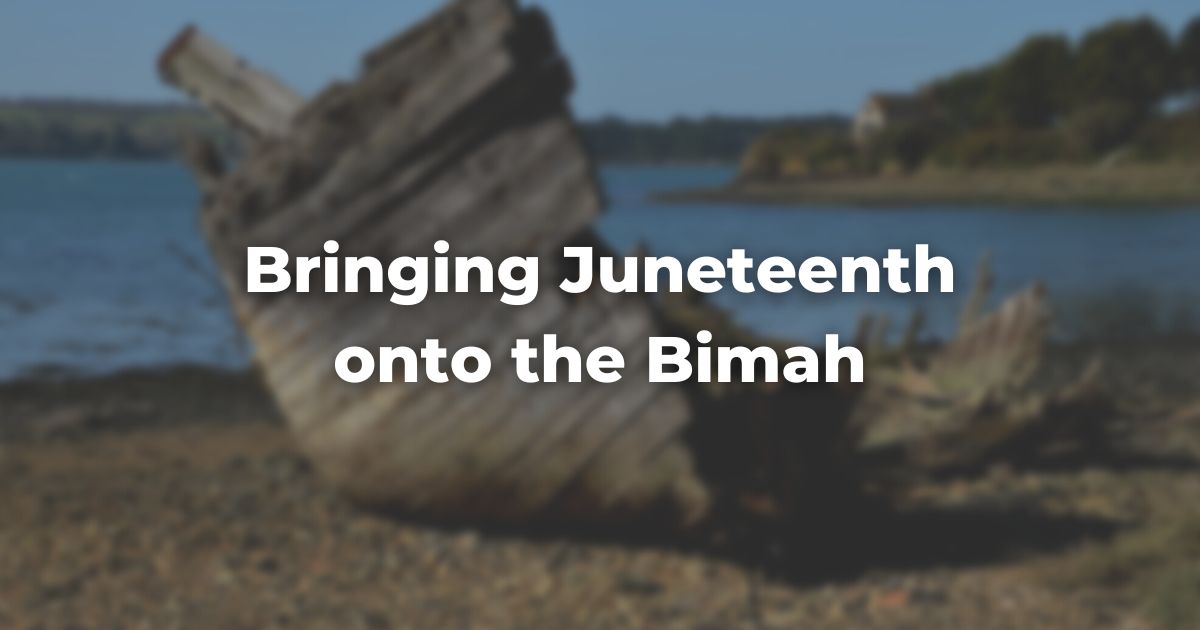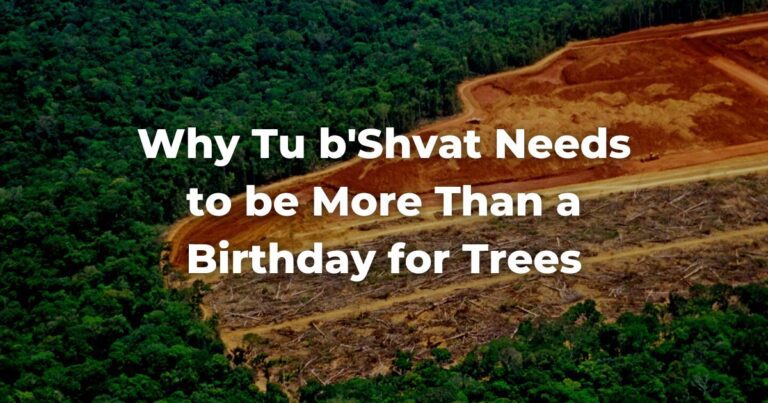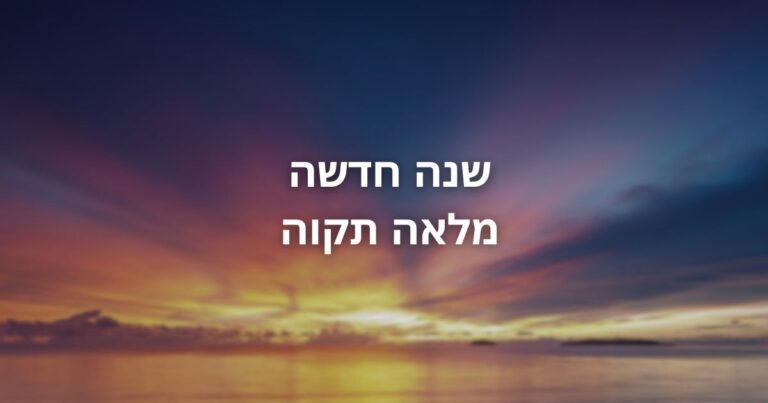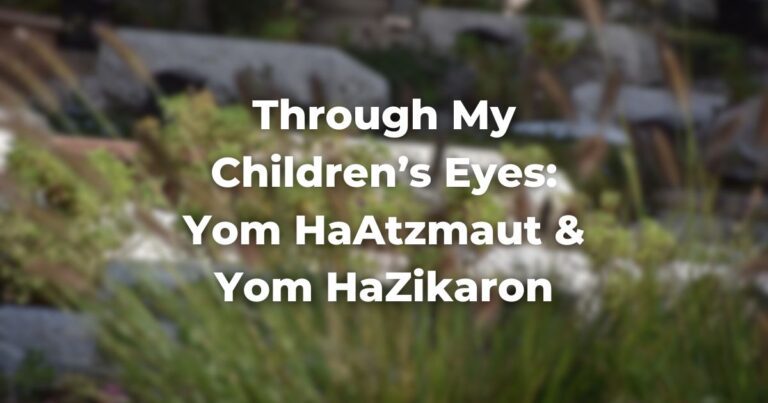Marking Juneteenth is a new practice for the vast majority of people in the US and many are still navigating what appropriate commemoration looks like.
Since becoming a Federal holiday, Jewish communities have been grappling with questions of whether it’s our place to celebrate Juneteenth in predominantly white passing Jewish spaces and how to celebrate the holiday respectfully and responsibly. As we are increasing our awareness of the multi-racial composition of our peoplehood, many have felt that even in the absence of a guidebook they were not free to desist from the task of doing something.
In 2022, USCJ Racial Justice Specialist Gulienne Rollins-Rishon, Rabbi Heather Miller and Sasha King took a daring step and co-authored a Haggadah for Juneteenth, which provided a framework within which to learn and speak about the holiday in a Jewish context.
They knew that some synagogues were putting their new Diversity, Equity, and Inclusion (DEI) tools into practice and wanted to bring Juneteenth into their communities but they did not know how to do so without feeling appropriative.
When the trio wrote the Haggadah for Juneteenth, they hoped that they were giving Black Jews a way to process the ancestral trauma of chattel slavery using the language and ritual of their Jewish identities. They also hoped that they were starting a new tradition that would create an opportunity for conversation around shared liberation in synagogue spaces.
The Story of Breathing New Life into Ritual
In 2022, Flatbush and Shaare TorahRefers to the first five books of the Hebrew Bible, the Tanakh, also called the Five Books of Moses, Pentateuch or the Hebrew equivalent, Humash. This is also called the Written Torah. The term may also refer to teachings that expound on Jewish tradition. Read more Jewish Center (FJC) hosted a Juneteenth Seder using the Haggadah for Juneteenth. The community found it to be a powerful experience that accomplished what Rabbi Heather set out to do for all of the multi-racial Jews represented in their community.
This year, Rabbi Lev Meirowitz Nelson approached Rabbi Heather with the idea of finding a supplemental reading that would go a step further and bring this holiday onto the bimah. Rabbi Lev’s creativity was sparked by the “Shabbat Shoah” practice at the Park Slope Jewish Center (PSJC), which includes a special reading on the Shabbat closest to Yom HaShoah.
Their observance, presumably modeled on how we mark other special Shabbatot like Shabbat Parah or Shabbat Shekalim, includes a special maftir from a second Torah scroll and a special haftarah.
This resonated with FJC’s leadership as a way of integrating Holocaust remembrance into the regular weekly religious life of the congregation; giving it a maftir and haftarah helped move Yom HaShoah out of the realm of newly created holidays that haven’t quite found their religious footing into the realm of ritual. With the community being open to this shift, Rabbi Lev thought the same could be applied for other culturally relevant and important holidays.
The reality is that a rabbi has to work pretty hard to make Shabbat Parah or Shabbat Shekalim feel relevant to Jews today–the original context and impetus are gone for us–but could the template of Shabbat Shoah serve to elevate other days that are important to us?
Without going to extremes, it seemed like an exciting way to breathe new life into the practice of maftir and haftarah–a time in the service when many congregants’ attention starts to wander.
The three holidays that initially occurred to Rabbi Lev as being worth exploring were MLK Shabbat, Pride Shabbat, and Juneteenth Shabbat. But with Juneteenth on the horizon, it felt important for the core of the idea to come from Black Jews, not just from white passing accomplices.
Supplemental Readings for Juneteenth
Rabbi Lev and Rabbi Heather started scouring the TanakhAn acronym for the name of the Hebrew Bible: Torah, Neviim, and Ketuvim. Read more for appropriate readings.
The first Haftarah that came to Rabbi Heather’s mind was from Shabbat Pesach (Ezekiel 37:1-14). On Pesach we are commanded to embody our remembrance of being slaves in Egypt and Ezekiel’s vision evokes both a feeling of desolation and the aspiration of hope that we are searching for during our Seders.
Rabbi Heather sometimes struggles with Pesach as an American Descendant of Slavery and the dry bones in this parsha remind her of the lives, lineages and histories lost to that stain in our history.
While leading a Freedom Seder earlier this year, Rabbi Heather incorporated wooden bowls during hand washing to connect to the idea that in some African cultures wood was used as a conduit to speak to the ancestors. Heather was struck by the tragic irony that that same wood was used as the material to build the vessels that carried stolen bodies into enslavement.
In Ezekiel’s vision, she also sees an image of the skeletal hulls of abandoned slave ships which inspired her to include this element in the updated Juneteenth Haggadah this year. Rabbi Heather couldn’t think of any other Haftarah that “felt” more appropriate to become the supplemental reading for Juneteenth.
When Rabbi Lev heard the connection to slave ships, he immediately thought of the imagery at the end of Ki Tavo. Lev has always loved ships and the sea, so this concluding line of the Tochecha (God’s curse to the Israelites should they stray from the covenant) always stuck in his mind.
But he had never made the connection to the actual slave ships of the Transatlantic Middle Passage until that moment.
The two of them discovered that the preceding few verses (Deuteronomy 28:64-69) also paralleled many of the experiences of Black people during and after slavery, up to the present day:
- being scattered among another people
- living a precarious life of terror (think of families torn asunder under chattel slavery)
- lynchings
- racialized terrorism
- mass incarceration
- and police violence.
Heather also pointed out that “you shall serve other gods, wood and stone” (Deuteronomy 28:64), which for the Torah is a condemnation, connected to the memory of some African religious practices.
With this new context, the final line also took on a whole new meaning:
“These are the terms of the covenant which THE ETERNAL commanded Moses to conclude with the Israelites in the land of Moab, in addition to the covenant which was made with them at Horeb.”
The pairing of these two texts created an emotional arc.
Read as maftir, the text from Deuteronomy brought to mind the horrors and abject cruelty of slavery and post-slavery racism in thematically-aligned imagery. The haftarah from Ezekiel transforms that into a celebration of redemption and joy, which stands at the heart of Juneteenth. We knew that we had found our supplemental readings.
Looking Ahead
It was exciting to go through the process of making intentional space in the Shabbat service for a modern holiday and they look forward to doing so again for other modern historic moments that our community wants to mark.
In the supplemental readings that Rabbi Heather and Rabbi Lev settled on, there is a thread of hope that the Divine will breathe life into those dry bones and make them into a vast multitude.
Bringing this celebration into our synagogues for a learning session and onto our bimah signifies that Black Jews are not just some appendix or footnote in the Jewish story but core parts of our communities.
It is our hope that by bringing holidays like Juneteenth in our Jewish spaces we are connecting to our shared humanity. When we do so, we recognize that there are Jewish people, like Rabbi Heather, for whom this holiday is personally relevant. When we do so, we declare that our liberation is truly bound together and we hope that actions like these will get us closer to the freedom that we all seek.
Authors
-
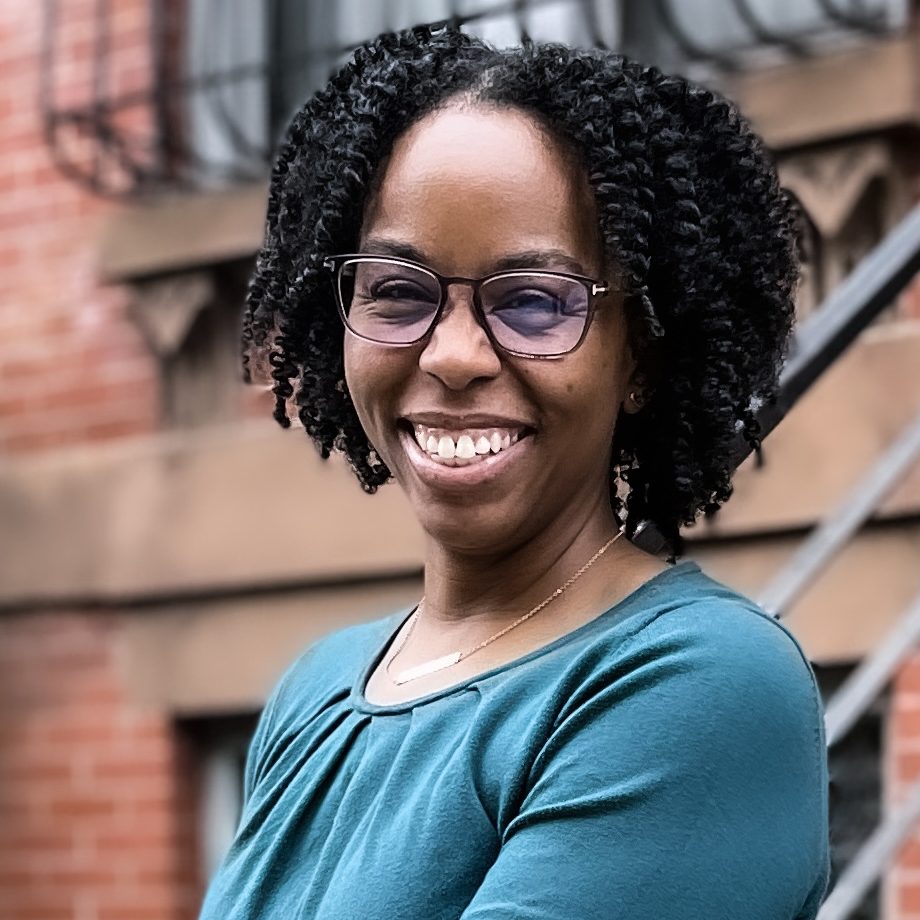
Rabbi Heather Miller is a school leader and President of the Flatbush and Shaare Torah Jewish Center. She is passionate about creating embracing spaces for all of the intersected identities in both the religious and secular parts of her life. Rabbi Heather merges her skill sets as a USCJ Board member and with other organizations. She is honored to have been selected as one of NY Jewish Week’s 36 to Watch 2023 and to have had her work featured in the nationally syndicated PBS show Table for All with Buki Elegbede. Her favorite role is as the mother of three amazing boys who are descended from both freed slaves and Holocaust survivors.
View all posts -
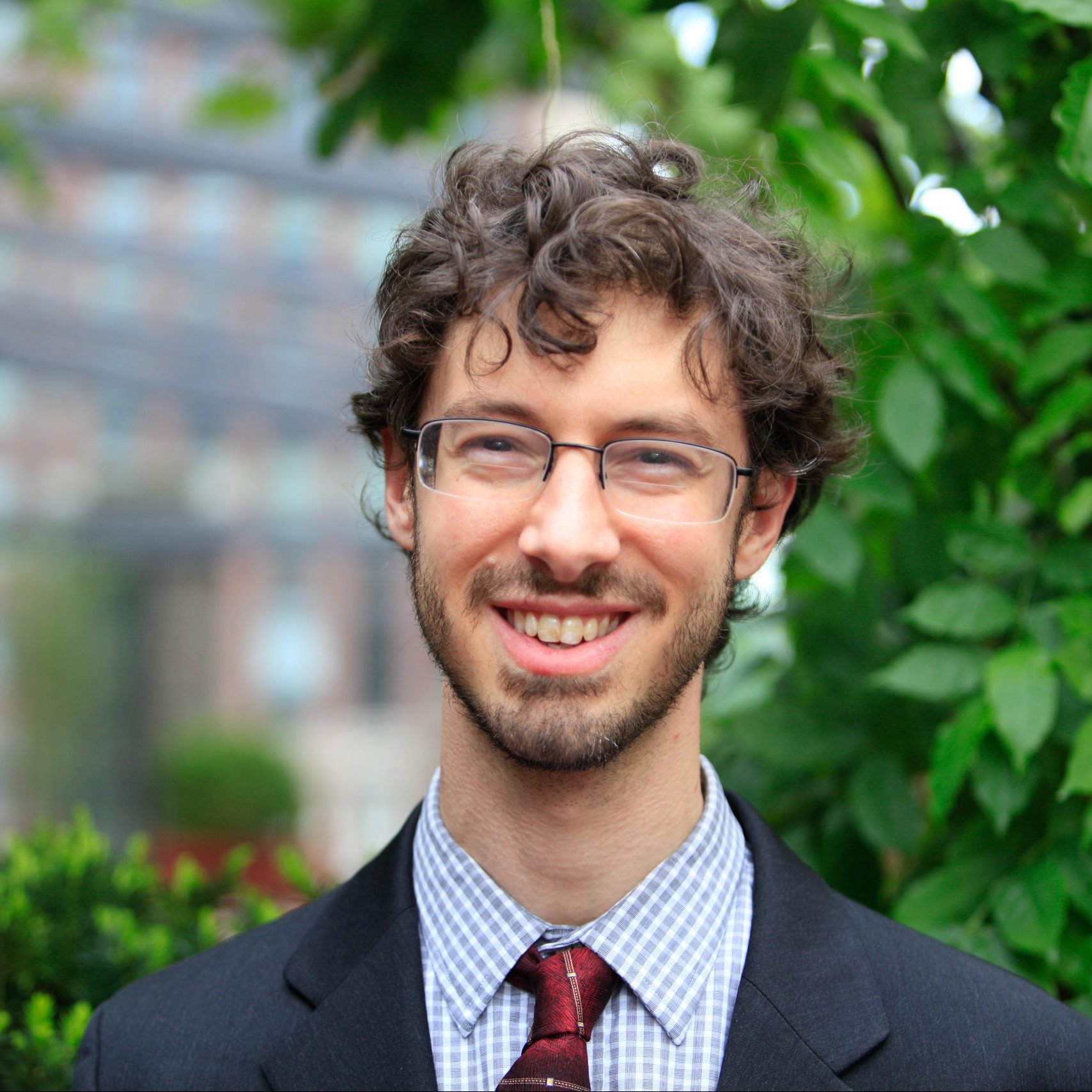
Rabbi Lev Meirowitz Nelson is Director of Leadership and Learning at T'ruah: The Rabbinic Call for Human Rights, as well as Director of T'ruah's Emor Institute. He also serves part-time as the rabbi of the Flatbush and Shaare Torah Jewish Center. Ordained in 2013 at Hebrew College, he is a Wexner Graduate Fellow and in 2017 was honored by the Covenant Foundation with a Pomegranate Prize. Prior to rabbinical school, he taught 5th grade at the Solomon Schechter School of Manhattan. Lev holds a BA from Brown University in geology. He lives in Brooklyn with his wife and three children.
View all posts

